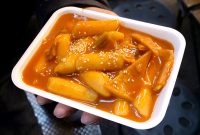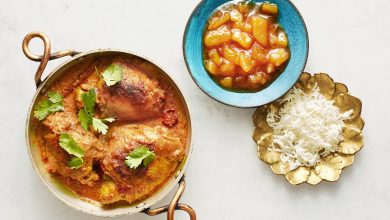What to try in Japan
Japanese cuisine is often associated only with sushi and rolls, but in fact its diversity requires a separate gastronomic journey. What original dishes that are not in Russian catering are worth trying in Japan – in our authentic menu.
MINIMALISM IN COOKING, AESTHETICS IN SERVING
The secret of Japanese cuisine lies in the careful selection of products, the beauty of serving, as well as in relation to food and its use in general. Only the best gifts of earth and water are worthy of being on the table, and the main task of the cook is to preserve their original properties. The amount of food taken should be such as to avoid overeating and the resulting loss of interest in food.
By the way, it is no coincidence that today the first place in the world in terms of life expectancy belongs to the Japanese. There are reasons for this – their daily food contains little cholesterol, it is prepared from the freshest products, a minimum of thermal and other processing is used in its preparation, which contributes to the preservation of a large number of useful components in food, for example, such as vitamins and mineral elements.
On the tray, often only with a decorative purpose, a particularly beautiful orange or bizarrely shaped cucumber is placed. The fish is cut into tiny, narrow pieces and served as a chrysanthemum on a small round tray. A butterfly is made from a slice of lemon, a chrysanthemum is made from a turnip or radish.
In Japan, as in other countries of the Far East, there is no concept of a “main dish”. Hence the huge variety of dishes on the table during any meal.
Thinly sliced pieces of meat float in a special iron pan along with vegetables, tofu and mushrooms. As seasonings, only sugar and soy sauce are usually added to the dish, which, in combination with the meat extract, create an unusually rich taste. The dish is popular in all regions of the country – the difference is only in what kind of meat is used in a particular region, and in the order of cooking. For example, some areas mix a beaten egg with sauce to create a milder flavor.
Kara age. The technique of frying karate is very simple: the pieces are first sent into flour and / or starch, then they are deep-fried. The Japanese don’t do anything for nothing. Quick to prepare, karate is great for a single serving meal or bento. As with many of their dishes, the Japanese use chicken thighs for karate because of their juiciness.
“Marbled meat. This is a true work of art, which implements the basic principle of Shinto: nature does not need to be improved, it must be joined.
Marbled beef got its name for the specific white streaks on the red cut. This type of meat became extremely popular in the sixties of the century before last, during the Meiji revolution. Prior to this, for many centuries, a dish of meat from cows of the Tolima breed was considered the rarest delicacy.
which only the elite were honored to taste. According to one of the widespread versions, the first cow of this breed was brought to Japanese soil from Korea by a certain goddess two thousand years ago. As for the facts, mentions of this product are found in Japanese chronicles over a thousand years ago.
During this considerable time, the breeding of miracle cows has become a real cult in Japan. Young bulls are walked in pristine Japanese meadows, hung from the ceiling by reins in a room with soundproof walls, fed the finest rice, and served premium beers and sake. This is the most expensive meat in the world – a portion costs from 150 to 300 dollars, and the price per kilogram of raw product reaches 500 dollars.

FOR A BIG COMPANY
Shabu-shabu. This is not just a dish, it is a whole ritual. A pot of boiling water and plates of thinly sliced vegetables and meat are placed on the table in front of you. Sometimes noodles and tofu are also served. Put the vegetables in the pot to make the broth.
The thinnest pieces of meat are lightly immersed several times in boiling soup (in which vegetables, mushrooms, tofu are boiled), and after the meat changes color a little, it is eaten, previously dipped in one or another type of sauce. The sauce plays a very important role: as a rule, it is prepared from citrus fruits or with the addition of ground sesame seeds. Actually, this dish got its name from the sound that meat makes when it is immersed in boiling water.
After the meat runs out, udo noodles or rice are added to the soup, after which another dish is obtained, with which the Japanese are very fond of finishing their dinner with shabu-shabu. Usually beef is used, but recently shabu-shabu made from pork, chicken, lamb and some varieties of fish has become popular.
It is believed that unagi helps with fatigue and gives a lot of energy.
This dish is also a great example of the minimalism of Japanese cuisine, striving to use fresh and healthy ingredients. An interesting Japanese story from the Edo period (1603-1867) is associated with this dish. For some reason, during Edo, in Japan, it was believed that in order to survive in the hot summer period, you must definitely eat foods that begin with the letter “y”.




